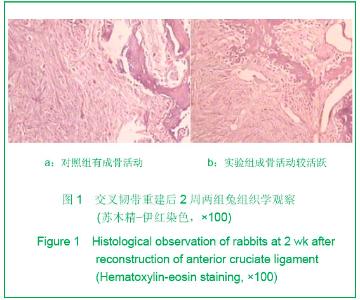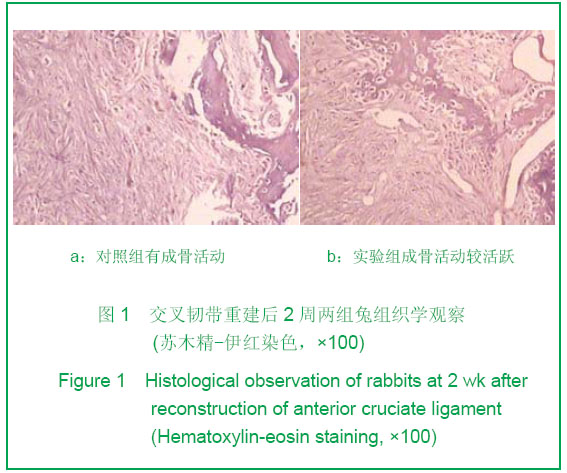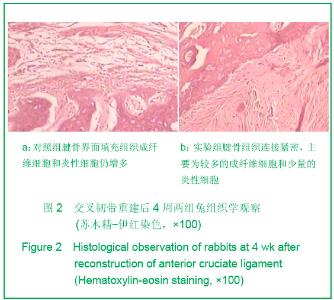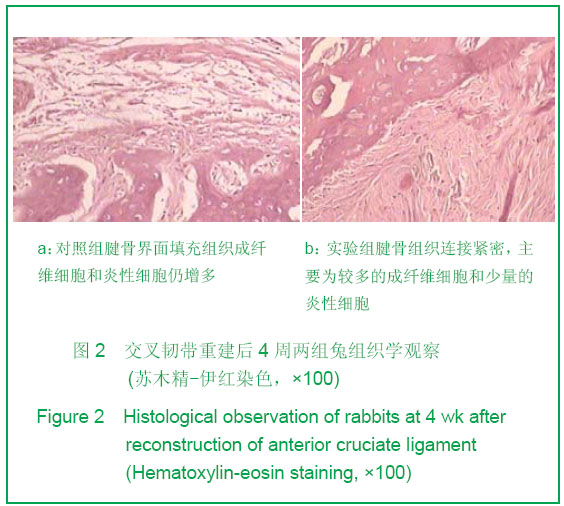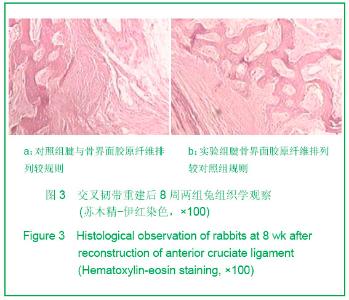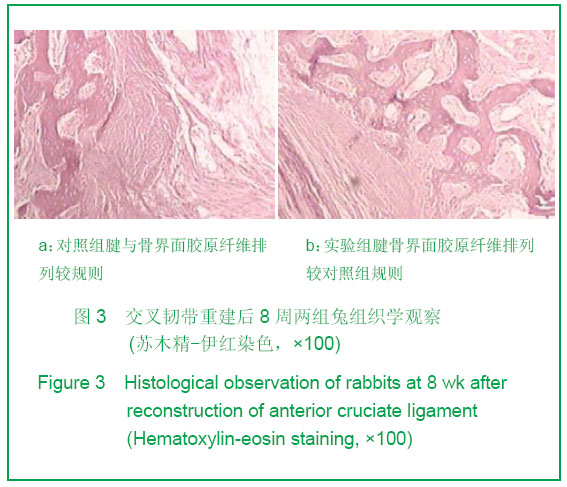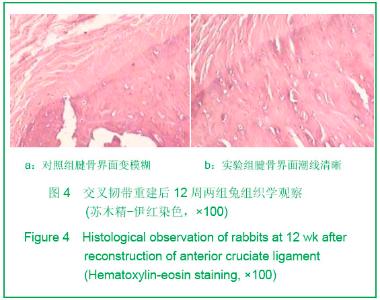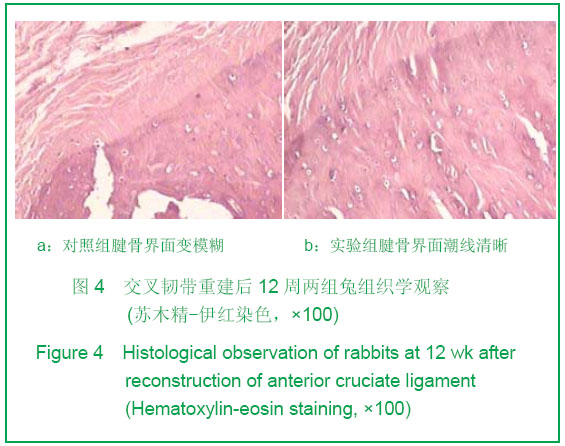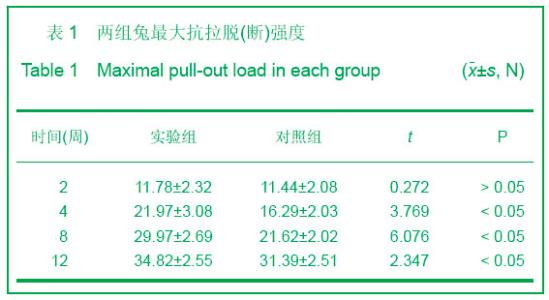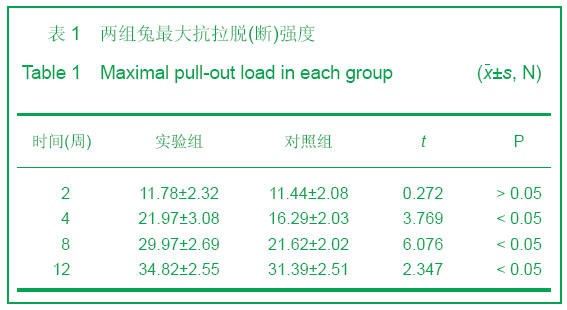| [1] Beynnon BD, Johnson RJ, Abate JA, et al.Treatment of anterior cruciate ligament injuries, part 2. Am J Sports Med. 2005;33(11):1751-1767.[2] Leung KS, Qin L, Fu LK, et al. A prospective study of bone to bone repair and bone to tendon healing in patella-patella tendon complex in rabbits.Clin Biomech.2002;17(8):594-602.[3] Eriksson E.Vascular ingrowth into ACL-grafts. Knee Surg Sports Traumatol Arthrosc.2008,16(4):341-341.[4] Nebelung W, Becker R, Urbach D, et al. Histological findings of tendon-bone healing following anterior cruciate ligament reconstruction with hamstring grafts. Arch Orthop Trauma Surg. 2003;123(4):158-163. [5] Zeng C,Cai DZ,Wang K,et al.Zhongguo Linchuang Kangfu. 2005;9(14):1-3.曾春,蔡道章,王昆,等.关节镜下前交叉韧带重建术后的康复干预[J].中国临床康复,2005,9(14):1-3.[6] Yamazaki S,Yasuda K,Tomita F,et al.The effect of transforming growth factor-betal on intraosseous healing of flexor tendon autograft replacement of anterior cruciate ligament in dogs.Arthroscopy.2005;21 (9):1034-1041.[7] Chen CH, Chen WJ, Shih CH,et al.Enveloping the tendon graft with periosteum to enhance tendon-bone healing in a bone tunnel: A bio-mechanical and histologic study in rabbits. Arthroscopy.2003;19(3): 290-296.[8] Huangfu X, Zhao J.Tendon-bone healing enhancement using inject-able tricalcium phosphate in a dog anterior cruciate ligament reconstruc-tion model. Arthroscopy.2007;23(5): 455-462.[9] Shi B,Liu YJ,Li ZC,et al.Zhongguo Jiaoxing Waike Zazhi. 2008;16(4):292-295.石斌,刘玉杰,李志超,等. 体外冲击波促进兔重建后腱骨愈合的实验研究[J]. 中国矫形外科杂志,2008,16(4):292-295.[10] Martinek V, Latterman C, Usas A, et al. Enhancement of tendon-bone integration of anterior cruciate ligament grafts with bone morphogenetic protein-2 gene transfer: a histological and biomechanical study. J Bone Joint Surg Am.2002; 84(7): 1123-1131.[11] Lim JK, Hui J, Li L, et al. Enhancement of tendon graft osteointegration using mezenchymal stem colls in a rabbit model of anterior cruciate ligament reconstruction. Arthroscopy. 2004;20(9): 899-910.[12] Karaoglu S, Celik C, Korkusuz P. The effects of bone marrow or periosteum on tendon-to-bone tunnel healing in a rabbit model. Knee Surg Sports Traumatol Arthrosc. 2009;17(2): 170-178.[13] Berg EE,Pollard ME,Kang Q. Interarticular bone tunnel healing. Arthroscopy. 2001;17(2):189-195.[14] Demirag B,Sarisozen B,Ozer O,et al. Enhancement of tendon-bone healing of anterior cruciate ligament grafts by blockage of matrix metalloproteinases. Bone Joint Surg Am. 2005;87(11):2401-2410. |
